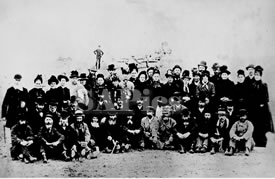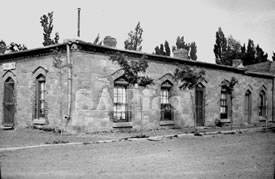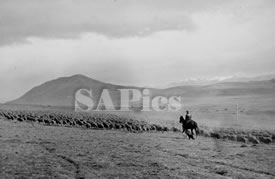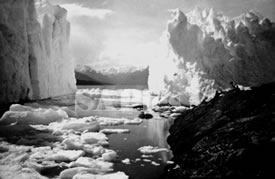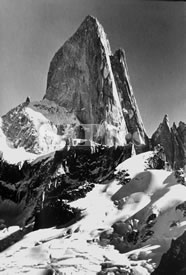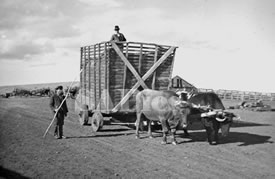From
Switzerland to the end of the Earth Aimé
Tschiffely from an old Swiss family was educated in Berne and chose a career as
a teacher. But deep in side him an adventurous spirit demanded excitement. He
left Switzerland before he was twenty to join a school in southern England only
to break his teaching life with spells as a professional footballer and boxer.
Then he decided to move on to Argentina. Once in Buenos Aires he settled back
into teaching and used his long vacations to take horses and explore the pampas,
the immense flat lands stretching for hundreds of kilometers south and west. Tschiffely
enjoyed these open spaces and the warm company of ranchers. A wealth of experiences
led him to attempt 'The Ride', a solo journey which to this day remains one of
the longest of its kind ever made. His book was so successful that he settled
in London, married, became an accomplished author and one of the most sought after
lecturers of the 1930s.  With
his wife Violet, Tschiffely lived in Chelsea one of the fashionable parts of the
city; their flat [apartment] was in Jubilee Place a narrow street of fine
town-houses within a few steps of the King's Road. [In the 1960's this road
was famous as the heart of 'swinging London' ] With
his wife Violet, Tschiffely lived in Chelsea one of the fashionable parts of the
city; their flat [apartment] was in Jubilee Place a narrow street of fine
town-houses within a few steps of the King's Road. [In the 1960's this road
was famous as the heart of 'swinging London' ] In
1937 Tschiffely returned to Argentina to make another journey. This time he wanted
to head in the other direction, south to Patagonia and onwards to Tierra del Fuego
more than 2,200 kms away from the capital. Argentina is a country which stretches
from the tropics to the Antarctic ice. In the 1930s the southern lands were inhabited
by hardy sheep farmers living on great estancias, [ranches] together with
a few settlers and the last of the true native people. The name 'Patagonia' came
from an early account of the people who supposedly had 'big feet' - the patagones-
and Tierra del Fuego or ' land of fire' was so called after stories of dozens
of camp fires burning in the night and seen for the first time by the Portuguese
navigator Magellan. In
1518 Magellan was sponsored by the King of Spain to find a route to the Spice
islands or 'Moluccas' and at the foot of South America he discovered the way to
the Pacific through a narrow strait, today named after him. Modern
southern Argentina has changed little except the towns have grown, and the native
people have gone. The tribes died and their customs have been lost. The ranches
are still there although many owners live in the capital or even overseas. The
scenery is remarkable and the emptyness stunning which adds up to one of the worlds'
great tourist attractions. Daily air links connect even the most distant towns
with Buenos Aires taking away the magic of the isolation experienced by Tschiffely.
Literary
Deserts.
Tschiffely felt these
romantic and remote southern lands were 'literary deserts' because since the 19th
century accounts of exploration little had been written about them. A biblical
quote at the beginning of his fifth book sums up his feeling at the time 'Get
up this way southward and go up into the mountain; And see the land, what it is;
and the people that dwelleth therein, whether they be strong or weak, few or many.....'
Numbers XIII , 17, 18 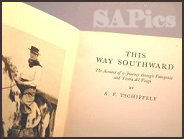
Tschiffely's
'This Way Southward' was first published in 1940
Gato
and Mancha were 28 and 30 and living in retirement at an estancia outside
Buenos Aires when Tschiffely called to see them. Even after twelve years there
was some recognition and they remembered a few tricks he had taught them. He enjoyed
being back in great open spaces of Argentina and from his account he was once
more at home with the gauchos and country folk. He called at wayside inns
and food stores making friends. His journey had to be by road because he
had just a few months free and wanted to avoid the harsh winter in the south.
Tschiffely travelled in a car supplied by the Ford company in Argentina and his
route was almost directly south across open desolate plains.
| 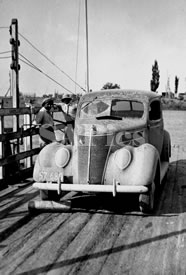
| After
travelling 1100 kms Tschiffely's first major stop was in the valley of the river
Chubut, at Trelew, then a small town founded in the mid 19th century by a group
of settlers who came from Wales, [part of the British Isles.] |
|
----A
tea shop in the Chubut valley
The
Welsh settlement ---Trelew
stems from the Welsh word 'Tre' meaning town and 'Lew' from the name Lewis after
Lewis Jones an early settler. Trelew is only a couple of kilometers to the north
of the the Chubut river, also an old name and this time from the original native
American inhabitants. The Chubut has many meanders so they called it
'chupat' meaning 'winding'. Tschiffely who was there only 75 years after the
Welsh arrived noted they used the name 'Camwy' meaning 'twisting'.Putting names
to one side Tschiffely remarked on the character of the valley with its Welsh
families and choirs for which Wales is famous.He recalled the earliest days when
the settlers arrived - 'they were miners, carpenters, blacksmiths and bootmakers,
none knew anything about agriculture'. After several bad harvest
years due to drought one settler, Aaron Jenkins decided to irrigate and the soil
soon began to yield well. That was the turning point and the settlement has never
looked back. | |
From
Trelew Tschiffely continued south into a barren wilderness which in places is
a desert. The Andes mountains are close at hand and rainfall on the western, Pacific
side drains the air of moisture long before it reaches Patagonia. The rugged foothills
are forested and the river valleys are filled with low trees and bushes. The mountains
are ice capped and glaciers reach downwards to beautiful lakes. Tschiffely spent
much of his time on the estancias where even today millions of sheep are
reared. He heard of a legendary hidden city known as 'The City of the Caesars'
inhabited by a group of lost Spanish explorers and local native Americans. The
story dated from the 17th century. Then Tschiffely heard tales of an ancient animal,
the giant ground sloth which was said exist in the wilderness. According to science
its species roamed Patagonia about three million years ago. Finally Tschiffely
ventured even further south crossing the narrow Magellan Strait to reach the huge
island of Tierra del Fuego where he stayed with more ranchers and watched the
wildlife.
The
last of the Original people........
At the time of Tschiffely's journey the remnants of the original native American
people were in sharp decline. While in the south he met Lucas Bridges of a missionary
family whose life had been spent with the native Americans. At one time five tribes
and sub tribes inhabited the region, some like the Tehuelche were in the desert
with territory reaching north to beyond the Chubut river and among other animals
they hunted guanaco a wild relative of llamas - the Andean humpless camels. The
Ona [Selk'nam] occupied much of Tierra del Fuego, while the Yaghán [Yámana]
and Alacaluf [Kawéskar] lived around the coasts and among the islands of
the remote south by gathering wild berries, fishing. Another group
the Haush [Mannekenk] occupied the east and south of the island of Tierra del
Fuego. Charles Darwin the Victorian naturalist who travelled in Tierra del Fuego
in the 1830s saw Yaghán living naked in the forests during the depth of
winter and they were, he said 'the most abject and miserable creatures
I anywhere beheld'. In a bay not far away an Indian woman came
alonside his ship suckling a recently born child. She remained there 'out of
mere curiosity while the sleet fell and thawed on her naked bosom'.
The
Ona fires spotted by Magellan were made by the timeold method of striking flint
stone and pyrites a naturally occurring metallic ore. Sparks were caught on bird
down or dried fungus. The people travelled by canoe and they carried their fires
from place to place on a hearth of stones and shells. It
was about a century later when Lucas Bridges and Tschiffely became great friends
and the native Americans were on the verge of extinction. Bridges' was able to
give the traveller a good snapshot of their situation. In one example alone Bridges
could see how the Yaghan had dropped from two to three thousand people in the
late 19th century to fewer than 30 in 1933. Intrusion by settlers such as sheep
farmers and gold prospectors was responsible for the decline together with introduced
diseases. Measles and smallpox were the chief culprits. Tschiffely thanked his
friend for 'so patiently allowing him to pick his brain'. Tschiffely
met the people and found the Onas and Yagháns the most interesting
- 'fortunately their amazingly rich languages have been recorded' he
said. He heard of their legends and in particular one about the slaughter of the
women. According to the folk story the women had a special power over the men,
perhaps a kind of witchcraft which was passed around at special gatherings. No
man was allowed near these events where the women learned how to cause sickness,
sudden pain and death. The men retaliated and killed all the women except for
the girl babies. The legend, just once of many has all the folk qualities of magic
and mystery. 'Not all the women died, some were able to transform themselves
into other beings and one young damsel ran towards a waterfall known as Okal Warren.
Before the men could catch her she plunged into the water and was transformed
into a fast swimming duck with wonderful plumage' . This folklore
was perpetuated in a semi religious rite, the 'Kina Rite' when the men secretly
painted themselves and wore conical masks of bark or sealskin. They danced where
the women could see them while threatening all manner of penalty for those who
would not submit.
| The
original people of Patagonia and Tierra del Fuego from various19th and early 20th
century sources |
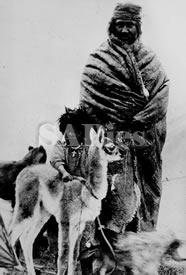 |
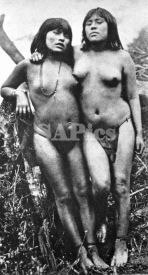 |
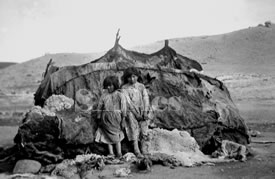
| 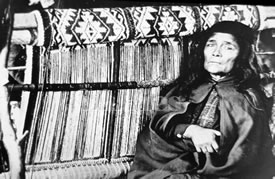
|
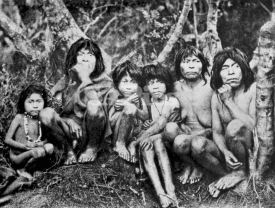 |
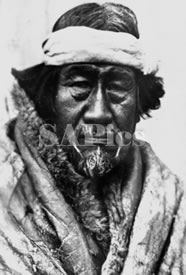
| 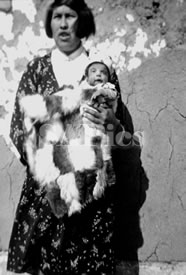
| From
Patagonia Aimé Tschiffely returned to Buenos Aires which he said 'changes
rapidly' noticing the abundance of skyscrapers. His old haunts were being modernised,
'the Casino' a music hall which very rancher and visitor knew had
lost its atmosphere. So too had the Phoenix Bar, better known as 'Fanny's bar',
once filled with tobacco smoke and aging hostesses, 'mostly Polish and on the
wrong side of fifty or sixty'. According to Tschiffely one had the
nickname of 'Aunt Lucy' and resembled the matron in the largest English college
in Argentina. Time was undoubtedly moving fast. World War II was on the horizon
with the 'Battle of the River Plate' incident not far behind. By the time the
war was over the original people of the south would be gone. Another piece of
the human pattern would be lost forever and the world much poorer. The damsel,
the waterfall and the duck would be just another story. Will the last person out
please turn-off the light?
| Aimé
Tschiffely died in 1954 in London, England and his ashes were taken to Argentina
where they were deposited in Buenos Aires. His portrait painted by J.B Manson
a Director of London's Tate Gallery and other memorabilia are kept in the museum
at Luján. When Gato and Mancha died their skins were stuffed and now they
are kept at the museum. | | The
Editors of Nonesuchinfo would like to give special thanks to Steven Mackenzie
CBE DSC for his help and encouragement; to Benno Affolter, Switzerland and also
to to the Municipal Museum of Luján, Buenos Aires for a special contribution.
|
|
|
| The
text and most of the images are © Copyright |
| For
any commercial use please contact | | |
| THE
NONESUCH - FLOWER OF BRISTOL |
| AN
EMBLEM FOR ENTERPRISE | | | 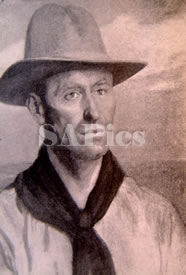
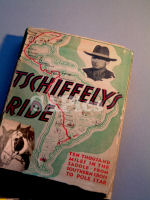
 With
his wife Violet, Tschiffely lived in Chelsea one of the fashionable parts of the
city; their flat [apartment] was in Jubilee Place a narrow street of fine
town-houses within a few steps of the King's Road. [In the 1960's this road
was famous as the heart of 'swinging London' ]
With
his wife Violet, Tschiffely lived in Chelsea one of the fashionable parts of the
city; their flat [apartment] was in Jubilee Place a narrow street of fine
town-houses within a few steps of the King's Road. [In the 1960's this road
was famous as the heart of 'swinging London' ] 

